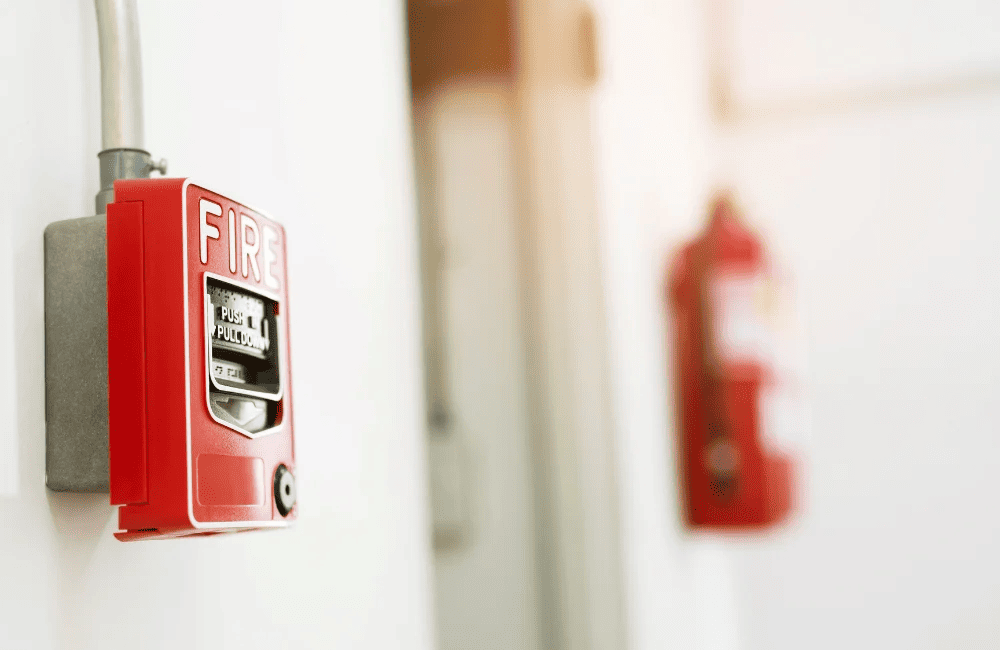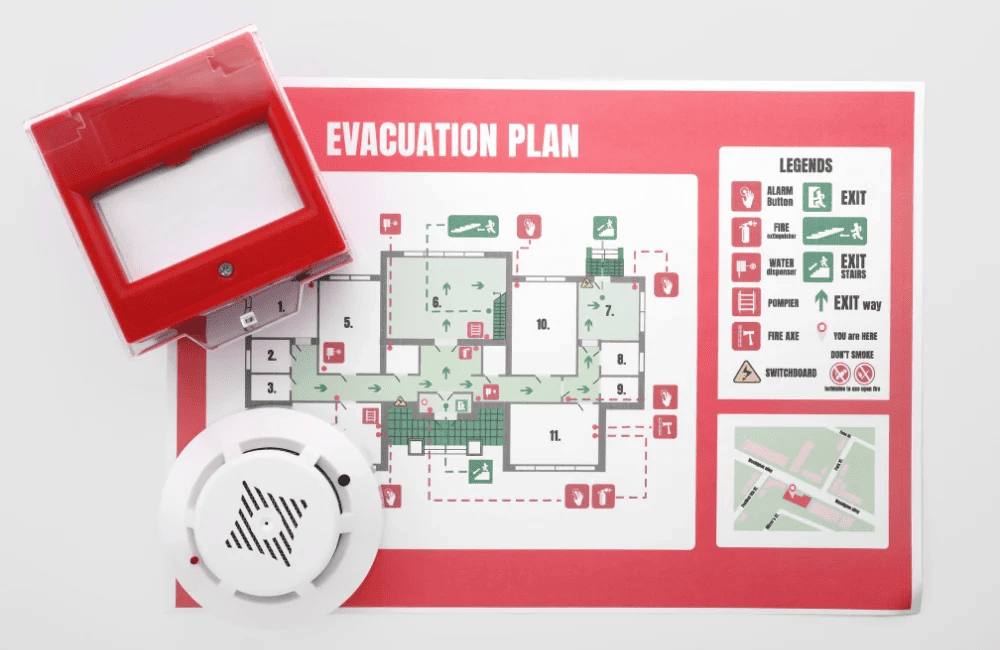Understand the Risks of Fire
Fire emergencies can ignite without warning, causing damage to life and property in mere seconds. In fact, over 70% of fire-related fatalities result not from flames but from smoke inhalation and toxic gases
Common causes include negligence, faulty electrical appliances, improperly extinguished cigarettes, or gas left on. Knowing the dangers and correct safety protocols can empower you to make the right decisions during emergencies in homes, offices, or public buildings
Preparation Steps Before Fire Strikes

Being prepared can significantly enhance your ability to respond effectively:
Use fire extinguishers correctly – keep an A–B–C type extinguisher in easily accessible locations like kitchens or exits. Familiarize everyone with the “Pull‑Aim‑Squeeze‑Sweep” method (i.e., pull the pin, aim, squeeze, and sweep at the base of flames). Also, plan evacuation routes and a safe gathering point
Install smoke detectors and fire alarms – at least one per floor, especially around corridors, bedrooms, and kitchens. Test them every 1–3 months and change batteries at least once a year to ensure timely detection and sufficient evacuation time
8 Essential Fire Survival Strategies (Without Panic)

- Stay calm, assess, and trigger alarms – Remain composed, evaluate the situation, activate alarms, and notify others. Use fire extinguishers only if safe; otherwise, evacuate immediately and dial emergency services (e.g., 199 in Thailand)
- Use wet cloth to protect mouth & nose – Cover yourself with a damp cloth or plastic bag filled with fresh air; larger cloths or wet blankets help shield against heat
- Check doors before opening – Use the back of your hand on the door or knob; if it’s hot, do not open. Seal gaps with a wet cloth, turn off ventilation, and seek alternative exits like windows—or call for help
- Stay low while moving – Crawl or crouch to stay within the fresh air layer, roughly the bottom 30 cm of a space, to avoid smoke inhalation and maintain visibility of exit signs
- Never use elevators; use fire stairs – Elevators risk malfunction. Use fire-resistant stairwells instead. If blocked, move to the rooftop and signal for help. In multi-story homes, have alternative escape tools like rope or collapsible ladders on upper floors
- If your clothes catch fire – Stop, Drop, and Roll – Lying flat and slowly rolling extinguishes flames. Remove burnt clothing carefully and consider rinsing with water if nearby
- Assist others if you can – Help evacuate others safely without compromising your own safety. Prioritize children, pets, and vulnerable individuals. After escaping, do not re-enter the building
- Avoid confined, risk-prone spaces – Do not run into bathrooms, basements, or enclosed spaces. Avoid moving to upper floors unless necessary—fire and smoke rise upward. For multi-story homes, have escape gear like rope ladders or portable stairs ready
While knowing fire survival techniques is essential, prevention offers your greatest protection. SECOM’s intelligent fire safety system integrates smoke sensors and immediate alerting to provide early warning—helping safeguard lives and property from the onset of danger


